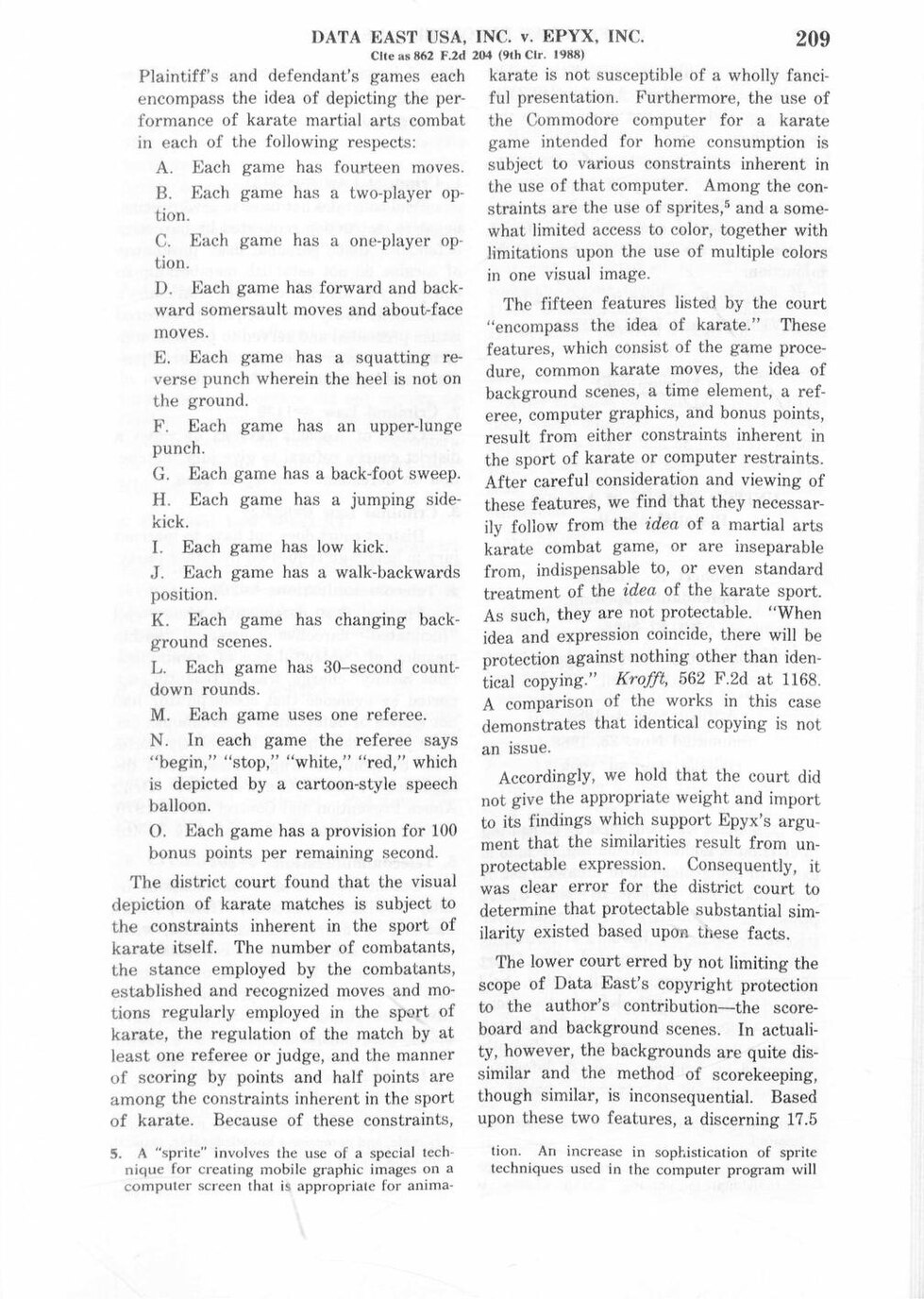Cite as 862 F.2d 204 (9th Cir. 1988)
Plaintiff’s and defendant’s games each encompass the idea of depicting the performance of karate martial arts combat in each of the following respects:
- A. Each game has fourteen moves.
- B. Each game has a two-player option.
- C. Each game has a one-player option.
- D. Each game has forward and backward somersault moves and about-face moves.
- E. Each game has a squatting reverse punch wherein the heel is not on the ground.
- F. Each game has an upper-lunge punch.
- G. Each game has a back-foot sweep.
- H. Each game has a jumping sidekick.
- I. Each game has low kick.
- J. Each game has a walk-backwards position.
- K. Each game has changing background scenes.
- L. Each game has 30-second countdown rounds.
- M. Each game uses one referee.
- N. In each game the referee says “begin,” “stop,” “white,” “red,” which is depicted by a cartoon-style speech balloon.
- O. Each game has a provision for 100 bonus points per remaining second.
The district court found that the visual depiction of karate matches is subject to the constraints inherent in the sport of karate itself. The number of combatants, the stance employed by the combatants, established and recognized moves and motions regularly employed in the sport of karate, the regulation of the match by at least one referee or judge, and the manner of scoring by points and half points are among the constraints inherent in the sport of karate. Because of these constraints, karate is not susceptible of a wholly fanciful presentation. Furthermore, the use of the Commodore computer for a karate game intended for home consumption is subject to various constraints inherent in the use of that computer. Among the constraints are the use of sprites,[1] and a somewhat limited access to color, together with limitations upon the use of multiple colors in one visual image.
The fifteen features listed by the court “encompass the idea of karate.” These features, which consist of the game procedure, common karate moves, the idea of background scenes, a time element, a referee, computer graphics, and bonus points, result from either constraints inherent in the sport of karate or computer restraints. After careful consideration and viewing of these features, we find that they necessarily follow from the idea of a martial arts karate combat game, or are inseparable from, indispensable to, or even standard treatment of the idea of the karate sport. As such, they are not protectable. “When idea and expression coincide, there will be protection against nothing other than identical copying.” Krofft, 562 F.2d at 1168. A comparison of the works in this case demonstrates that identical copying is not an issue.
Accordingly, we hold that the court did not give the appropriate weight and import to its findings which support Epyx’s argument that the similarities result from unprotectable expression. Consequently, it was clear error for the district court to determine that protectable substantial similarity existed based upon these facts.
The lower court erred by not limiting the scope of Data East’s copyright protection to the author’s contribution—the scoreboard and background scenes. In actuality, however, the backgrounds are quite dissimilar and the method of scorekeeping, though similar, is inconsequential. Based upon these two features, a discerning 17.5
- ↑ A “sprite” involves the use of a special technique for creating mobile graphic images on a computer screen that is appropriate for animation. An increase in sophistication of sprite techniques used in the computer program will
